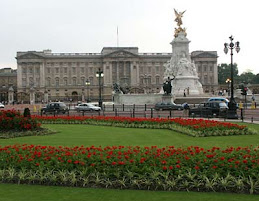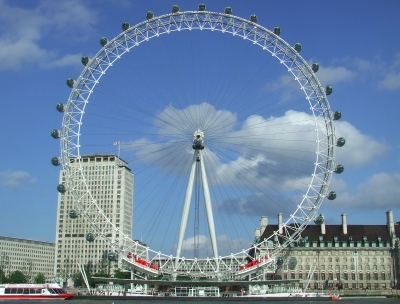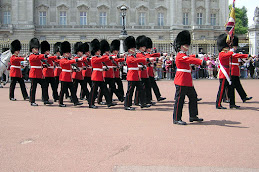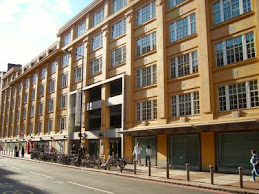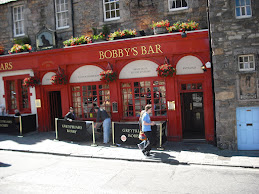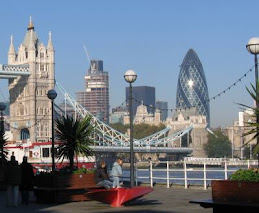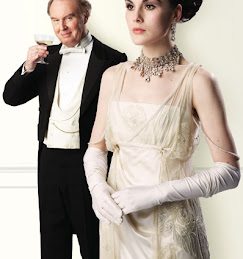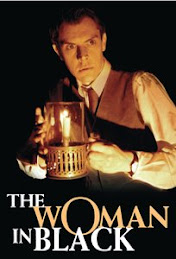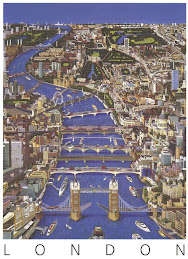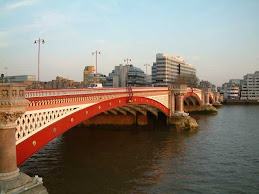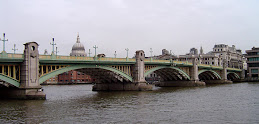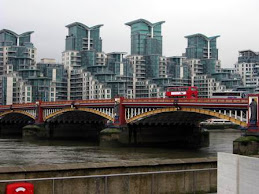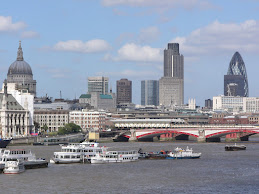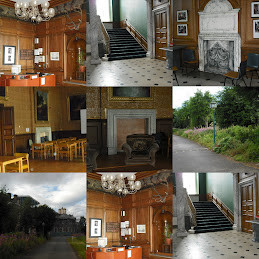
CHILDREN’S LIBRARY: Mrs. Ann Holden/ Children’s Librarian
Introduction:
What an exciting and rewarding position it is to work in a children’s library where each day brings new events and an influx of new people. I see it as a gift to be able to teach children about reading and offer all sort of games and activities that encourage literacy on a day to day basis. While I understand the complexity and chaotic environment of a children’s library by observing this type of department afar from my present library position in the Reference Department at the Public Library system, in Baton Rouge, Louisiana, I see daily how hard it is to keep librarians in the children's department because it takes a strong willed individual with much energy to handle the constant planning and creativity that stems from this type of librarianship. I see children’s librarianship as an avenue to tap into creative thinking and it requires an individual who has a big heart, a love for helping children learn to read and discover the fun in learning. Yet I know this position is so much more that what I describe and offers constant interaction with children and their parents and requires a good deal of thought into exciting activities to offer throughout the year. While I believe myself to have those qualities or characteristics, I may not have the huge energy stores I used to have just a mere decade ago. I ponder my abilities and willingness to handle such a position as Mrs. Amanda Owens, the children’s librarian at the Barbican Library holds. She personifies the type of individual that could handle such a task. Mrs. Owens, as the children’s librarian for the Barbican Children’s Library, a city of London library, manages the collection, services and a broad span of free activities and programs for children ranging from ages of 0 all the way through 14. What may seem like a daunting task for some seemed to be a nice match for Mrs. Owens. She offered a description of the collection and summarized each service, program and activity with ease, as if it was perfectly etched in her mind.
Description of the Children’s Library:
Mrs. Owens started off describing two rolling exhibitions that had a two year waiting list for participation that included evening events and private viewings. She explained that the library offered RFID software in reference at three public stations found at the ‘Inquiries’ or Reference desk. The Barbican Library is one of three lending libraries in the city of London (aside from Shoe Lane and Camomile Street branches) that offers the city library services through the local government in order to provide quality services to workers, residents and those who come in as visitors. To become a patron is free if you happen to live or work in London, but includes those who study in London as well. All that is needed to ‘join’ or to become an active patron is to provide identification and proof of your home or study address. The children’s collection consists primarily of board books, puzzle story and picture books on compact disk and audio cassette for beginning readers, as well as reference materials to serve children and families such as encyclopaedias and dictionaries.
The layout of the library located on the top floor, was explained to additionally consist of a ground floor which housed the Music Library. Mrs. Owens seated us in what appeared to be a story time section of the children’s library. The step seats framed the center of the library as a stadium type seating to offer a comfortable seating arrangement and provide a ground stage where many activities could take place. She commented that the floor gets used a lot since there is such limited overall space in the Children’s Library. She pointed out that new signage had been placed throughout the entire library to help better identify through enhanced visibility important zones of the library, as the lighting was kept at minimal levels, possibly to conserve energy as that seems to be a big issue I have read about in and around London through advertisements and posted in many places such as restrooms and kitchens for examples. The Children’s library offered very colourful displays that nicely and clearly advertised or identified services and programs for the public to view upon entry. The position of this library was well placed at the end of the Barbican library so as to help buffer the noise. We were introduced to the lovely full-time library assistant by the name of Julie who basically is Mrs. Owens right hand assistant that helps manage the work flows and responsibilities of six other library assistants.
Collection Development, Basic Library Services and Patrons:
The collection consists of 24 thousand items collectively, with 15 1/2 thousand that remain on the shelf for viewing. The remaining 8 ½ thousand items are stored in the basement. The collection is one that has been carefully and thoughtfully built up in order to serve the age groups of 0 – 14 and contains a variety of items to serve the following categories: (Under 5); First Reader (short chapter, pictures); Stories (ages 5 – 10); More Serious Children’s Literature (ages 10+ [ie. Harry Potter]); Young Teens (ages 12 – 14); and (YA and Adult) with not much overlap found here and Reference shelves soon to be integrated with Fiction.
Mrs. Owens explained that she collects books on CD and Cassette, as well as downloadable books on MP3 Players. The later is an expensive format, so therefore only the outer boxes are found on the shelves. When a patron is ready to check out the item, the MP3 is redeemed at the Children’s Inquiries desk. The loan period for items is three weeks, with the exception of CD’s that check out for only one week. Library borrowing is a free service as it is in America. Patrons are offered an option to make reservations of items already on loan. The following I found to be interesting and make perfect sense: children that have overdue items that were checked out on their library cards do not have any fines, on the contrary a parent that has overdue items from the children’s collection that were checked out using their library cards do have to pay fines.
The children’s library allows up to 8 borrowed books per patron at a time, in contrast to the 50 that can be borrowed at the East Baton Rouge Parish Public Library in which I work. I think it is understandable to limit the number of items borrowed by the youth with their cards and as they age and mature, the provision of more items to be allowed. Of course the parents can check out more of the children's books and are held accountable for late returns through library fines accessed.
The majority of library visits are from area schools, with the Islington borough schools having weekly visits. She informed us that currently only three quarters of the schools in London request visits. The majority of class visits are in the afternoons. Some are from nurseries and play groups with the offer of storytelling, singing (Julie loves to sing to the children) and playtime with a large assortment of toys. The Barbican Children’s Library generously supplies book loans of up to forty books each time for differing subjects.
As far as the main services, programs, and events ongoing at the Barbican Children’s Library are: Rhymetime; Babytime; Outreach; Reader’s Group; Carnagie Awards; Children’s Book Week; World Book Day; Book Start; Reading is Fundamental; Summer Readers and Plus Serve. For a very brief synopsis of each, Rhymetime is a program for toddlers from 18 months to 3 years that is held on Mondays. Babytime is a program for infants on up to toddlers (0 – 18 months) and is held on Fridays. Moms have an advantage to visit with one another, as a community of mothers comes together to share/socialize with one another during this time. Mrs. Holden stated that there are not very many places for young mom’s to visit like this so these programs are very successful and greatly appreciated. Outreach is an excellent avenue for the Children’s Librarians to go out into the community and maintain contact with the children who do not necessarily have the means to come in at all or often enough. Mrs. Owens stated that the new outreach services are going well currently. The Reader’s Group offers two sessions for older children and last up to 45 minutes each. The shadowing group is given a list of books that is “whittled down” to a short list. From there the reader’s group votes on the best book. According to Amanda, this is a great way for kids to discuss books and has been successful. The best book that is chosen has some input into the Carnagie Book Award, so the program is beneficial on several levels. The reader groups meet each week and are typically a group of approximately eight individuals ranging in age of 10 to 14 years of age. There are regular Saturday events that last one hour and involve crafts, puppetry and the ballet. The Children’s library keeps a scrapbook and the staff members really enjoy dressing up for the occasions. All in all, it sounded as if the library staff workers were very enthusiastic about the program and the children were getting something special out of it. The Children’s Book Week offered is a one week event in October of each year. The events are useful in promoting reading/literacy. Classes are invited and there are three day sessions. The World Book Day is another special event at the Barbican Children’s Library that last but just one day and offers a much smaller version of similar activities as the Children’s Book Week.
It would be irresponsible for me not to mention the government funded inititatives for the Children’s Library, as it offers children important resources to promote literacy. Basically, the government is the corporate body that provides full funding for the program 'Book Start'. Each child is given three packs as mandated by the government of the City of London Libraries. The age groups are: ‘naught’ (0) – 18 months; 18 – 36 months (golden pack) and 36 – 48 months (treasure chest pack). The local libraries are responsible for distributing the packets and ensure that each pack has library registration and related information inserted into them. Mrs. Owens stated that the Book Start program has run very well.
Another sponsored program is called 'Reading is Fundamental'. I was proud to learn that my favourite coffee company, Starbucks, is funding a literacy program for children in the United Kingdom. I will make sure the let the Children’s and Young Adult department know about this in the ‘States’!
The Summer Reader is another program offered by the Barbican Children’s Library and offers booklists for the children to encourage reading. The motivation is for the children to read all of the books on the list and receive a metal. The Governor gives a lovely reception to hand out awards and I could read from Mrs. Owens' expression/beam and pride about the program that ‘everyone’ benefits!
Lastly, the Plus Serve program is one that is based upon national standards. This is a program that I did not gather enough information about, but understood it to be one where adults and children work together to boost reading levels and measure satisfaction levels.
**************************************************************************************************
MUSIC LIBRARY: Mrs. Liz Wells/Music Librarian
Introduction:
The Music library is on the bottom floor, directly below the Children’s Library. I observed a computer screensaver that innovatively advocated the services and resources of the Music Library. For a brief description, the Music Library is one of the largest music collections that is made available to the public and offers a full range of musical resources such as books, videos, DVD’s, scores and recordings. In addition to a broad book collection about musicians and music in general are over 70 periodicals that date as far back as the 19th century. Electronic resources include a very unique 'Song Index' of the popular music of today in addition to the classics. At the front of the Music library one will see an electric piano and to the back of the library, eight listening booths.
Background Information from Mrs. Liz Wells:
Mrs. Liz Wells is the very lovely Music Librarian I met today. I was very impressed with her knowledge of her resources and how well she presented herself and the collection. Not only was she soft spoken and relaxed, she handled herself very professionally and welcomed questions from the group. I understood from this tour that she very much welcomed our visit and was not only happy to talk about her library, but interested to meet and learn about who we are and what our plans were in the future on a professional level.
On our way into the library, I observed the 'Skills for Life' informational display for Adults that offered literacy and numeracy skills. Books were on display here. The funding for this program was one that Mrs. Wells stated the library received through donations I believe and was partially funded by the BBC. There were many good displays found of musicians. I also took notice of a nice DVD display and a computer station that offered a music catalog.
For just a bit of background information on the Barbican Library as a whole, it was described by Mrs. Wells as the second largest public library in London. The Barbican Center is itself an Art Center, which is why the library spaces are so very large. There are other relevant specialization areas that have been built up at the Barbican Library and the collection was built from scratch in the 1980’s. The strengths of the collection is that it is a modern one with newer publications, therefore the patrons may benefit from the more current information found in musical books, DVD’s and CD’s.
Who are the Patrons for which the Collection Serves?
According to Mrs. Liz Wells, the majority of the patrons are those who live, work and study in the London borough. Yet, the library honestly serves a much wider range of individuals because virtually anyone may use the library. I learned from Liz that the majority of those who work in London visit the Barbican Library due to the convenience of location and of course all of its available tools and resources found in the center of the financial center of London. I was so very surprised to learn that less than 10 percent of the population found in London are residents!
Other patrons that use the library and are in close proximity geographically to the Barbican Library are the Guildhall Library of School and Dance, the City Library, King’s College and Music Conservationists.
The Barbican Music Library Collection:
Of interest is this library’s sizable CD collection, with over 16 ½ thousand in number. This amount is considered quite extensive in the United Kingdom libraries and offers many wide ranges of musical genres. It is common to locate jazz, country, musicals and folk music for some examples. The genres offer a categorization scheme which is further organized alphabetically, depending upon the format or even the sex of the artist for another example. Liz let us know that the system that is used to categorize and organize the music collection is a simple one that works. Of course, the stock must be weeded regularly to allow space for adding to the collection. She made sure to point out that the weeding is necessary with the music collection because it is not an archival collection!
The Library Budget: a Boost from Sales
The summer sales of the music collection generate a substantial supplemental income for the Barbican Music Library. I was surprised to hear Mrs. Wells say that the CD charges were a substantial sum of 40 pounds, with DVDs varying radically at only 2 pounds, 75 pence per piece. Yet, I do understand how expensive it is to supply CD's.
More Information about the Collection:
I learned that the Pop DVDs and the tutorials were very popular items in this music collection. The collection is considered quite exclusive as it includes items not even found in the video stores! While this is wonderful, the Barbican Music Library has an assortment of its own unique challenges, such as currently Mrs. Wells is seeing a drop in loans within the CD collection. She thought this may be a result of the fact patrons can now download their music, so the library has an eye out for a new method of delivery (i.e. online).
Of convenience to the patrons, the music collection can be accessed online with a library card and a password to authenticate the patron’s account information. The librarian spoke of the fact that because of Wifi access throughout London, the music collection and resources can be easily accessed outside of the music library! As an additional note, the popularity of the music online is of reference and the printing of downloadable music.
The book collection basically covers all areas in the music collection. The items are classified by the Dewey Decimal System 18 – 22. The books circulate for a standard period of three weeks in this collection.
Special Collections, Resources and Services for Patrons:
As mentioned in the introduction, there is an electronic piano that has proven itself very popular in the library. Patrons can use a set of headphones to drown the sound so that the other patrons in the library are not disturbed.
The music periodicals number 70 in number and are kept on a display shelf individually for one year prior to binding. The Barbican Music Library collects many journals of individual British composers.
After the binding of the music journals takes place, the journals are actually considered a special collection in that there are only a few libraries in the country with similar collections. After binding, the journals are more easily identified, handled and stored/preserved. Interlibrary loan services are provided and the libraries have access to a union catalog to search for specific items in a host of music collections. Liz stated that the library advantageously uses the ILL statistics to “select stock”. Typically acquisitions such as this is used to choose ‘the top 20’. Qualified librarians and a few library assistants with an interest in music are commonly involved in the selection process for this library. There is also a suggestion book for input by patrons of the collection.
Of importance, popularity, and interest to the special collections is the online 'Gramophone' which is an index that is used to select music. Study scores are also another special item in the collection that is plentifully out of print. There is little weeding here as it is hard to conduct interlibrary loans and some items are never returned.
Classification of the Collection:
As far as classification scheme of the collection goes, the music librarian stated that using the Dewey Decimal System is not a good system for music. McColvin & Reeves is the current system used to categorize and break music down by how it is performed.
Other Important Miscellaneous Things to Know:
Item 1: Mrs. Wells told us about Yammel, which is an international body that coordinates music around counting.
Item 2: Binding journals that are hardbound is very expensive, yet it enhances preservation of the item and therefore extends its life.
Item 3: The Music Periodicals are used for Interlibrary Loans and are non-circulating.
Item 4: If a patron does not know the exact name of a book that a song is found in, the sizable Song Index can offer options through the intuitive and navigitable database that is now made available from the library’s website. This resource offers a help in cataloguing CDs and scores and offers searches by title and ISBN for example.
Mrs. Liz Wells said that with the eight listening booths made available in the Barbican Music Library, (6 for CDs, 1 for cassettes, and 1 for LP player) a free service is provided patrons with no time limit. Lastly, lap top connections are conveniently made available in the booths in addition to Wifi access inside and outside of the library.
Web Links of Relevance:
Music Archive of unique Audio and Video Interviews and Live Performances
City of London Libraries: Barbican Library
Barbican Library Online Catalogue
